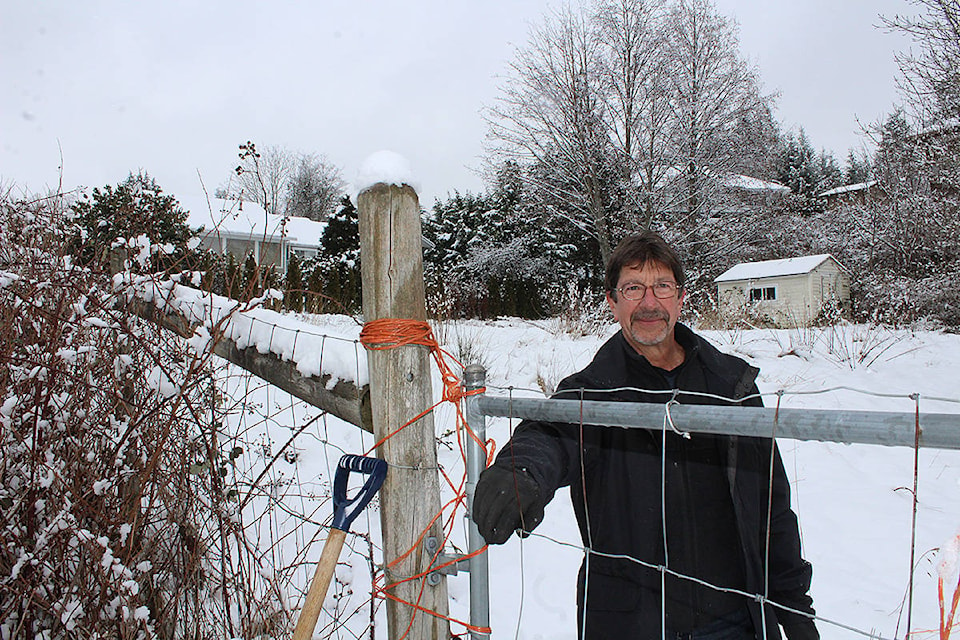Cost estimates for the controversial No. 2 sewage pump station have ballooned.
And that has some Comox Valley Regional District directors worried about the project and whether it’s the right choice.
Sewage commission directors heard Tuesday that the estimated cost for the proposed pump station on Beech Road has increased from $12 million to $22 million – or 70 per cent more than originally planned.
Kris La Rose, senior manager of water/wastewater for the district, said construction cost escalation and a number of technical issues are responsible for the increased budget estimate.
In his written report, he cited the level of redundancy required for a pump station of this type, the complexity of the foreshore tie-in to the existing forcemain, and the constraints imposed by the small size of the property and lack of construction lay-down area.
La Rose said the foreshore tie-in “is a risky and intensive pice of work”. Further adding to the costs are commitments to reducing odour, noise and vibrations at the site.
Area B director Rod Nichol, who has no vote on the issue even though the proposed pump station is in his area, urged the commission to “think very, very seriously before you go any further ahead.”
“You’ve got a 70 per cent increase in costs because of extreme technical difficulty. The initial Courtenay pump station was a lot cheaper.
“The cost of fixing up the Willemar Bluffs will buy you time. Get this line totally out of the estuary. This is now becoming a very expensive band-aid. The cost estimates are going to continue to go up,” he said.
Courtenay director Erik Eriksson wondered how building an entirely new system to service south areas, including Union Bay, would compare to the total costs of the new pump station, other pump station upgrades, and upgrades to the sewage treatment centre.
“If the costs are similar I’m thinking that’s a better way to go,” he said.
But LaRose said the $48 million planned for the upgrades is considerably less than putting in a new system.
The second update directors received was on hydrological work to assess existing wells in the Beech St. area to determine type of construction, age, and whether they had intact seals. Some new monitoring wells have also been installed.
“The impact of a spill could be high. Our position is that the facility would be designed to a very high standard … that translates into low or moderate risk to surrounding wells,” he said.
But Nichol said he didn’t think the risks to wells were low to moderate whatsover.
“When you look at the big picture, our present system is not going to last that long. Wouldn’t it be better now to go back to the table, fix up the Willemar Bluff situation, buy yourself some time to come up with a proper solution rather than a bandaid,” he said.
“Why not fix the whole problem, rather than piecemeal. Seventy per cent more money now just for a new pump station. There is more and more risk to the environment, technical problems. There are more things that can go wrong … Come up with a better plan for the Valley,” Nichol added.
The only ‘good news’ report was one on the results of checking the foreshore forcemain for leaks.
La Rose said acoustic leak detection was done along the entire length of the pipe, and electro-magnetic testing was done up to the base of Beech Street.
“The good news on this front, the acoustic leak detection did not detect signs of any leaks along the entire section inspected, including Willemar,” he said.
The electro-magnetic scanning didn’t find any breaks either, or any broken reinforcing wires and bars.
“Given that no breaks were discovered, the condition likely can be considered good,” La Rose added.
Further discussion is expected at next month’s sewer commission meeting when more test results and information becomes available.
“This work is technically complex and we want to take the time to get it right. We appreciate being updated with these preliminary results and we look forward to the final report that will inform our decision about the next phase of the project,” said Barbara Price, Chair of the Sewage Commission, in a press release issued by the regional district.
“The project will move forward to the next phase only if the red flags have been removed and the commission is confident the facility makes financial sense and can be constructed without significant long term risk to ground water in the area,” the press release stated.



